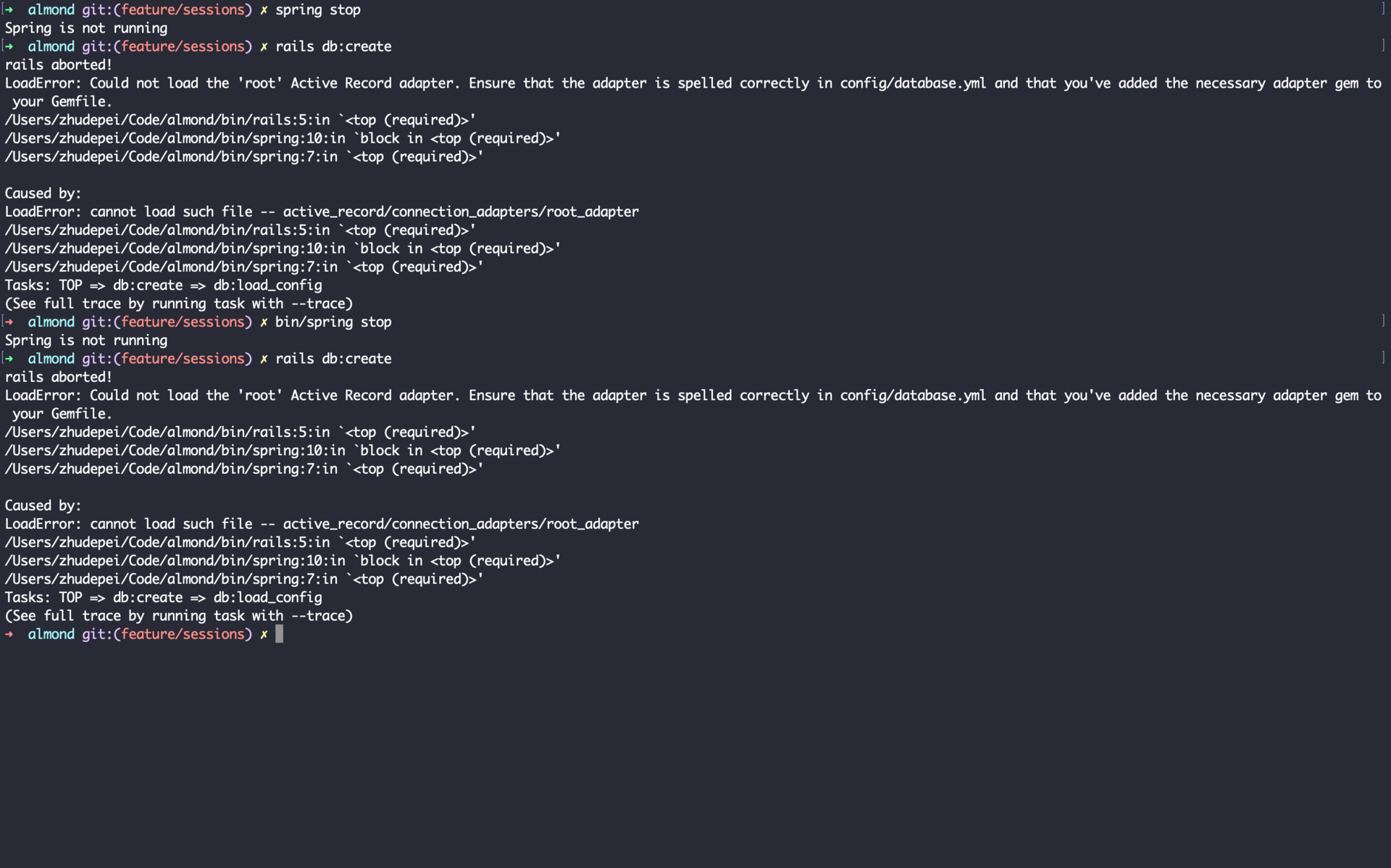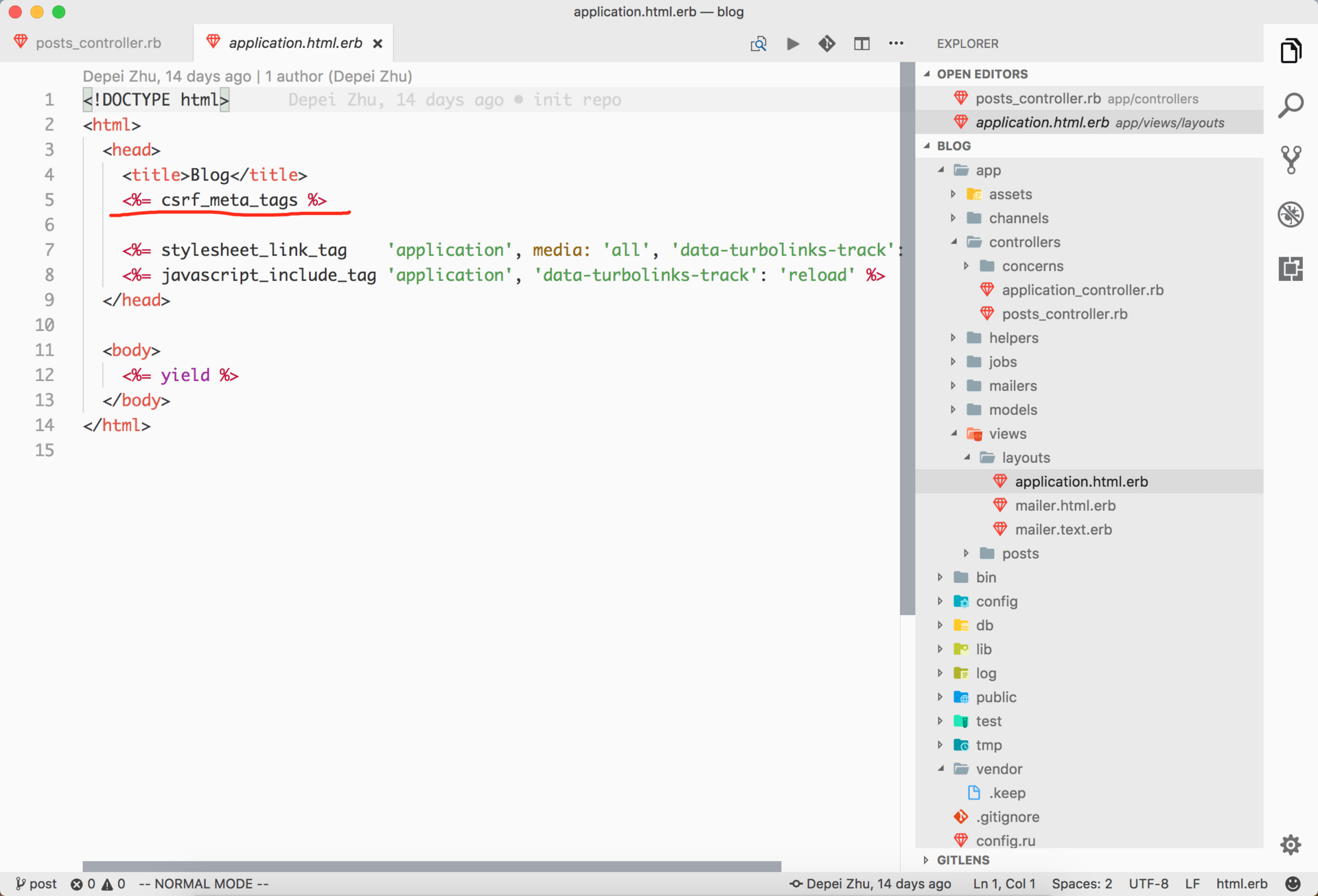-
请问一下 ruby 现在可以显示调用私有方法了(self.private_method)? at 2024年02月26日
昨天和同事讨论这个问题才发现改了,谢谢
-
validates unless 问题 at 2021年07月21日
class Post < ApplicationRecord enum source: { original: 0, link: 1 } validates :post_link, presence: true, if: :link? endRubyMine 符号方式也可以跳
-
validates unless 问题 at 2021年07月21日
这个文档看过,还以为 proc 方式隐藏着什么魔法
。原来这样,看来是我想多了,谢谢
-
Rails API 多次 Rendered at 2021年07月15日
知道了,谢谢
-
Rails API 多次 Rendered at 2021年07月15日
关键是去掉
.with_attached_attachment.with_attached_icon这两个方法之后就只渲染一次了 -
Rails 连接数据库出错 at 2021年05月12日
就是 DATABASE_URL 变量有值导致的。谢谢
-
Rails 连接数据库出错 at 2021年05月12日
是的,有值,谢谢
-
Rails 连接数据库出错 at 2021年05月12日
也试过了,我现在在重新用 rbenv 装 ruby 试一下,谢谢大佬
-
Rails 连接数据库出错 at 2021年05月12日

没用,重启系统都试了
-
Rails 连接数据库出错 at 2021年05月12日
# MySQL. Versions 5.5.8 and up are supported. # # Install the MySQL driver # gem install mysql2 # # Ensure the MySQL gem is defined in your Gemfile # gem 'mysql2' # # And be sure to use new-style password hashing: # https://dev.mysql.com/doc/refman/5.7/en/password-hashing.html # default: &default adapter: mysql2 encoding: utf8mb4 pool: <%= ENV.fetch("RAILS_MAX_THREADS") { 5 } %> username: root password: root socket: /tmp/mysql.sock development: <<: *default database: almond_development # Warning: The database defined as "test" will be erased and # re-generated from your development database when you run "rake". # Do not set this db to the same as development or production. test: <<: *default database: almond_test # As with config/credentials.yml, you never want to store sensitive information, # like your database password, in your source code. If your source code is # ever seen by anyone, they now have access to your database. # # Instead, provide the password or a full connection URL as an environment # variable when you boot the app. For example: # # DATABASE_URL="mysql2://myuser:mypass@localhost/somedatabase" # # If the connection URL is provided in the special DATABASE_URL environment # variable, Rails will automatically merge its configuration values on top of # the values provided in this file. Alternatively, you can specify a connection # URL environment variable explicitly: # # production: # url: <%= ENV['MY_APP_DATABASE_URL'] %> # # Read https://guides.rubyonrails.org/configuring.html#configuring-a-database # for a full overview on how database connection configuration can be specified. # production: <<: *default database: almond_production username: almond password: <%= ENV['ALMOND_DATABASE_PASSWORD'] %> -
开发环境的上传图片失败,生产环境却可以,请问哪里出了问题呢? at 2018年01月05日
你没用 application.html.erb 这样的 layout 么?


-
开发环境的上传图片失败,生产环境却可以,请问哪里出了问题呢? at 2018年01月04日
-
请教关于 ActionCable 的问题 at 2017年12月09日
确实是这个问题 (引用了两个 *_ujs)。现在解决了。谢谢。

-
请教关于 ActionCable 的问题 at 2017年12月05日
测试过好多次。都是一样的结果
-
请教大家一个关于 Ruby 的 Array 的问题? at 2017年09月27日
谢谢